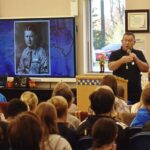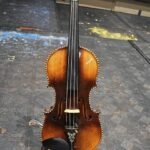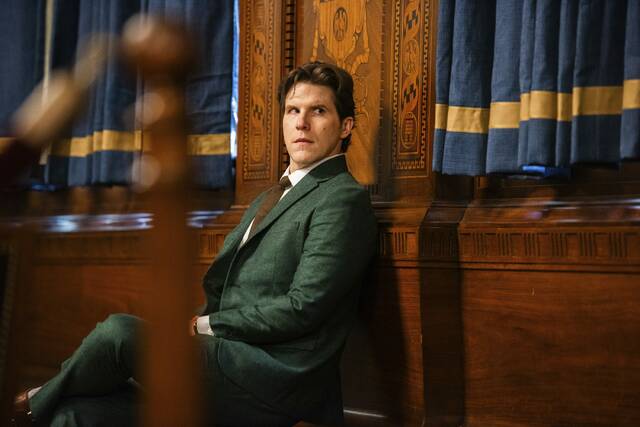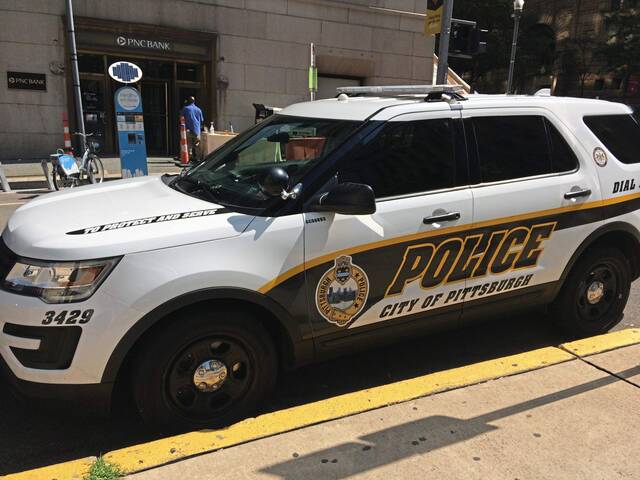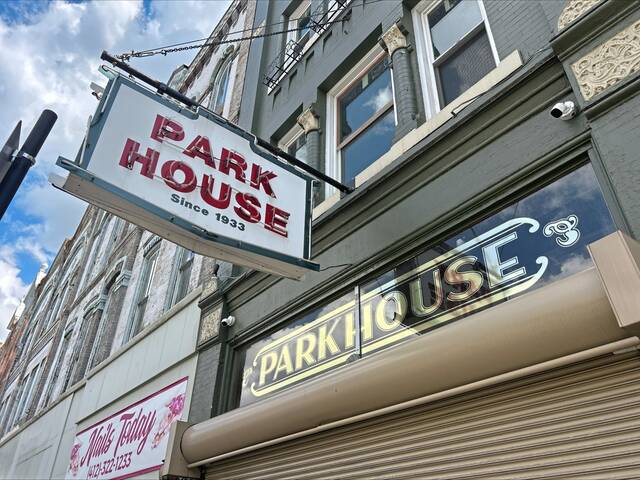While many young men tend to view their fathers as heroes, the Rev. Christopher Edmonds had no idea about the degree to which his own dad lived up to the standard.
As Hampton Middle School students learned when the Tennessee pastor visited Oct. 23, U.S. Army Master Sgt. Roddie Edmonds (1919-85) saved about 200 Jewish lives in a German Prisoner of War stalag during World War II.
Yet after he returned home, the elder Edmonds didn’t say much about his time in the service, even to members of his family.
“My father was so ordinary. Yet when confronted with matters of life and death in a German POW camp, dad looked evil in the eye and dared a Nazi to shoot. His moral compass never wavered,” his son wrote on the website for Roddie’s Code LLC, a nonprofit dedicated to honoring “a humble Christian soldier who made extraordinary choices.”
Chris Edmonds’ visit related to lessons in empathy and perseverance that seventh-graders have been learning through a unit on “Refugee” by Alan Gratz, a book that revolves around three main characters from different eras: Nazi Germany, 1990s Cuba and modern-day Syria.
“One of the key themes of the story is the impact of the choices of each character on those around them. Melissa Survinski, middle and high school enrichment facilitator, said. “In particular, one character has to make a choice to sacrifice themselves for the sake of others.
“We really wanted to give the students a real-life example of other people who have made these same ‘choiceless choices’ of standing up for what is right even in the face of peril,” she explained. “The story of Master Sgt. Edmonds was the perfect example to share with the students of a real-world version of what they are reading in a historical fiction novel.”
According to Roddie’s Code, Nazi captors announced that all Jewish POWs in Edmonds’ camp were to report the following morning, presumably facing death. Edmonds, who was in charge of the prisoners, ordered all of them, Jewish or not, to stand together.
“When the German officer in charge saw that all the camp’s inmates were standing in front of their barracks, he turned to Edmonds and said, ‘They cannot all be Jews.’ To this Edmonds replied, ‘We are all Jews here.’
“The German took out his pistol and threatened Edmonds, but the master sergeant did not waver and retorted, ‘According the Geneva Convention, we have to give only our name, rank and serial number. If you shoot me, you will have to shoot all of us, and after the war you will be tried for war crimes.’ The German gave up, turned around and left the scene.”
Posthumously, Edmonds was recognized as Righteous Among Nations, Israel’s highest award for non-Jews who risked their own lives to save Jewish people during the Holocaust. He was the first American soldier to receive the honor.
Chris Edmonds and co-author Douglas Century tell Roddie’s story in the book “No Surrender: A Father, a Son, and an Extraordinary Act of Heroism That Continues to Live On Today.”
Along with welcoming Edmonds as guest speaker, Hampton Middle School students took part the same day in another World War II-related program: Violins of Hope Greater Pittsburgh, which showcases instruments played by Jewish musicians during the Holocaust, many of which family members donated to the project long after the fact.
“I believe it is extremely valuable to provide our students with hands-on learning experiences, ones that allow them to make relevant connections. We know middle school students connect to the materials when we offer these unique, authentic experiences for them,” Marlynn Lux, their principal, said. “I could tell our students genuinely appreciated this experience, since all of our orchestra students expressed interest in playing these special violins following the formal presentation.”
Accompanying the violins was information about their provenance, including details regarding an instrument owned by an inmate who played in the men’s orchestra at the Auschwitz concentration camp and managed to survive the ordeal:
“Abraham Davidowitz, who fled Poland to Russia in 1939, later returned to postwar Germany and worked for the Joint Distribution Committee near Munich,” helping Jews who were living in displaced persons camps.
“One day, Davidowitz was approached by a man who was emotionally and financially broken. When the man offered Abraham his violin, Abraham paid him $50, hoping his little son, Freddy, would play it when he grew up.”
Freddy later donated the instrument to Violins of Hope, “to be fully restored and brought back to life. Since then, this violin, now restored to perfect condition, has been played in concert by the best musicians all over the world. Almost.”







